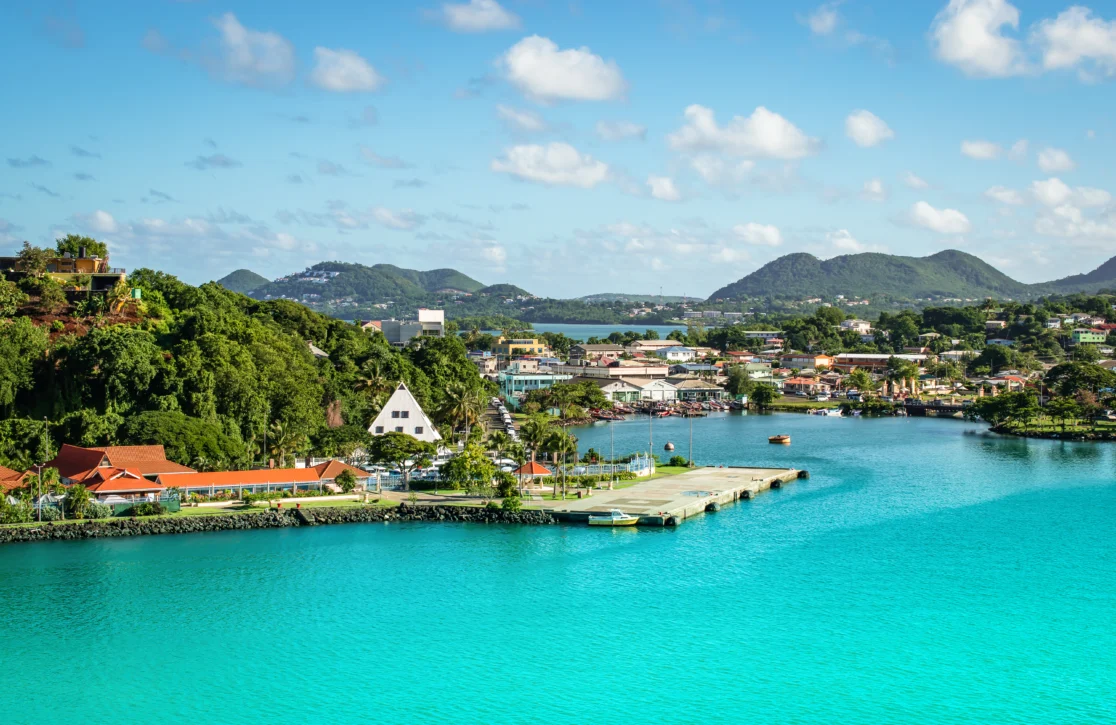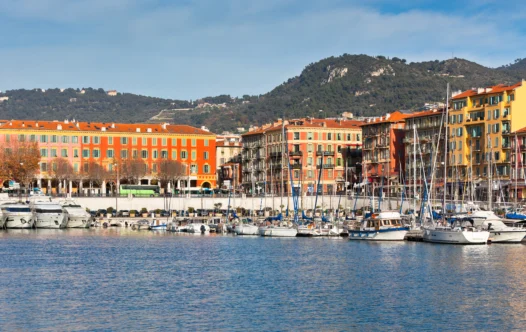Sailing the Galapagos: Top Islands For The Ultimate Wildlife Lovers’ Getaway
Plan your dream adventure sailing through the Galapagos and discover the best islands for wildlife lovers seeking once-in-a-lifetime encounters.
Where can you swim alongside penguins and marine iguanas, catch a sea lion sneaking lunch at a fish market, watch a blue-footed boobie do its elaborate mating dance, and get up close to giant tortoises that can live to be over 175 years old? Well, the answer has already been given away in the title, of course, but there’s no other place on the planet where you can sail while enjoying all of these wildlife experiences along the way (and much more).
Before I sailed through the Galapagos Islands, the remote archipelago off the Ecuadoran coast had been on my bucket list for years. I knew I was in for a treat, but it was truly an experience of a lifetime, a place I think every wildlife enthusiast should go at least once. It’s not just the incredible diversity (nearly 9,000 different species!), the islands are a haven for animals that are often delightfully curious about human visitors and practically fearless.
With 13 major islands and more than 60 smaller islands and islets, before heading to the Galapagos, you’ll want to narrow down your options. For the ultimate wildlife lovers’ getaway, consider putting these top islands on your sailing itinerary.
Santa Cruz Island
Santa Cruz is the perfect island to start your Galapagos yacht charter. It’s close to the airport on Baltra Island, lying just north, while serving as the archipelago’s main tourism hub. It offers the widest range of amenities for visitors, including grocery stores, ATMs, and many shops, restaurants, and hotels in the capital of Puerto Ayora.
This island is also one of the best for seeing the legendary Galapagos tortoises in their natural habitat, with El Chato Tortoise Reserve and Charles Darwin Research Station the top spots. But just walking through Puerto Ayora, I encountered all sorts of wildlife lounging around the sidewalks and beaches. The countless sea lions, marine iguanas, and Sally Lightfoot crabs ignored the humans snapping photos and stepping around them.
Once you’ve explored Santa Cruz, if you stay in Puerto Ayora, you’ll be in the main port town, perfect for your yacht departure to other islands.
First: Maurizio De Mattei/Dreamstime, Second: Donyanedomam/Dreamstime
Espanola
Located two hours south of San Cristobal, Espanola is the only place in the world where you can see waved albatross nests. The island is a breeding ground for 12,000 pairs, the planet’s entire population. As it’s one of the most isolated in the archipelago, there are also many endemic species like the Espanola mockingbird and the Espanola lava lizard.
Anchor near or at Gardner Bay on the northern coast, where you’ll find a pristine white sandy beach where sea lions often bask in the sun. Afterward, head to Punta Suarez to look for the waved albatross—they’re almost always seen between April and December. If you’re lucky, you might even witness their elaborate mating ritual, an intimate moment between these “love birds” with a remarkable eight-foot wingspan. Blue-footed boobies also nest here, and both Nazca boobies and marine iguanas are commonly spotted.
Bartolome Island
Bartolome is north of Santa Cruz and home to one of the archipelago’s most iconic landmarks, Pinnacle Rock. If you’ve seen Russell Crowe’s “Master and Commander,” you saw it on-screen, but there’s nothing like viewing it in person. By climbing the 372 steps on a wooden staircase, you’ll enjoy a panoramic view of the towering rock formation, the turquoise waters of Sullivan Bay, and nearby islands. Most visitors by yacht anchor near the island’s north beach opposite the famous rock, to allow for snorkeling and diving.
Beyond the “rock,” you’ll find plenty of wildlife on and around Bartolome. Be sure to grab your snorkeling gear as it’s one of the best for viewing animals underwater, including Galapagos penguins, sea lions, rays, and lots of colorful fish. Watch for blue-footed boobies who like to fish here, too. They soar high in the sky before plunging straight back down in their attempt to catch a meal. We got lucky when one decided to land on the lava rock just feet from our boat, seeming to pose for a perfect shot.
Images clockwise from top left: Jesse Kraft/Dreamstime; Courtesy of K.C. Dermody; Courtesy of K.C. Dermody
Genovesa
Known as “Bird Island,” Genovesa is a tiny, horseshoe-shaped island toward the north end of the Galapagos archipelago, famous for its astounding array of unique birds. Yachts typically anchor in Darwin Bay, a U-shaped bay that was formed by a volcanic caldera. Visitors usually make a wet landing on the beach and then soon discover how the island got its nickname. Numerous species can be spotted, including red-footed and Nazca boobies, Darwin finches, lava gulls, terns, swallow-tailed gulls, and frigates with their bright red throats that puff up like a balloon.
Genovesa is one of the few islands where red-footed boobles are commonly sighted in high numbers, and it’s also home to marine iguanas that soak up the sun along the shore. If you go beyond Darwin Bay, you’ll see a tidal lagoon where snorkeling and diving bring opportunities to see all sorts of marine creatures, including hammerhead sharks.
Santa Fe
Less than 10 miles from Santa Cruz Island, Santa Fe is small, but inhabited by a wealth of unique wildlife. There are many endemic species and subspecies, such as the Santa Fe marine iguana, the Barrington land iguana, the Barrington leaf-toe gecko, and the Santa Fe rice rat, which can’t be found anywhere else on Earth. You can spot them in Barrington Bay on the northeastern coast, which is also the primary anchorage spot, offering a stunning sheltered cove with brilliant cobalt waters. There’s also a small sandy beach where sea lions like to lounge around.
Images clockwise from top left: Marek Poplawski/Dreamstime; Donyanedomam/Dreamstime; Patricio Hidalgo/Dreamstime
Fernandina
Fernandina is the youngest and westernmost of the Galapagos Islands. It’s roughly a million years old with limited flora due to the La Cumbre volcanic eruption in 2020. Only lava cacti and mangroves dot its landscape, but the 248-square-mile island has an almost alien-like appearance with the endless black of the hardened lava, and it’s one of the best places to watch flightless cormorants with their vivid blue eyes.
This island is also a top spot to see both marine and land iguanas. Marine life is abundant, with the waters surrounding Fernandina inhabited by everything from penguins, sea turtles, and iguanas to sea lions, manta rays, and sharks. There are no human settlements, no hotels, restaurants, or any infrastructure, so visiting by yacht (or as part of a cruise) is the only way to experience it, making it ideal for your Galapagos trip.
San Cristobal Island
One of my favorite islands is San Cristobal, home to the biggest Galapagos sea lion colony in the archipelago. Protected anchorage can be found in Wreck Bay, which is about 40 minutes by taxi from the main town and capital of the archipelago, Puerto Baquerizo. La Loberia beach is just over a 5-minute drive from the center, and it’s one of the best places on the island to watch sea lions. Visiting in November, not only were there dozens of adults lounging on the sand and splashing around in the bay, but lots of pups. You can walk among them, but there’s no touching. Some are so curious that they’ll try to come close, but you’ll have to back away and resist the urge, as their mothers will abandon them if they detect a human scent.
Another unique experience can be enjoyed here by snorkeling at Kicker Rock, a megalith rising over 500 feet above the sea that resembles a sleeping lion from a distance. Underwater, you’ll find a paradise with everything from sea lions and sea turtles to eagle rays, white-tipped reef and hammerhead sharks.
Photos courtesy of K.C. Dermody
North Seymour
A tiny island near Baltra, North Seymour Island is less than a square mile in size, but it’s another one of the best for those who want to watch blue-footed boobies. Male frigate birds show off their bright red throats here, and there are also an abundance of Galapagos sea lions and both land and marine iguanas. Yachts and tour boats anchor in a quiet bay, transferring visitors to the landing site by dinghy or zodiac boat. Once onshore, there’s a well-maintained trail that leads through the unique landscape, the best way to see the healthy population of land iguanas, especially around the cactus, as it’s one of their favorite foods.
Isabela Island
Isabela is the biggest island in the Galapagos at 1,771 square miles, making up more than half the size of the entire archipelago, yet it’s largely undeveloped. Puerto Villamil is the primary point, although with limited berthing, yachts typically anchor offshore and reach the port with a smaller boat or dinghy. It’s worth the effort to get here, as there are more wild Galapagos tortoises on Isabela than any other, with a population of around 6,000. The island is also the best for sighting penguins, which can often be seen mingling with blue-footed boobies on the rocks just offshore.
Head to the sandy beach of Concha de Perla and you’re guaranteed to see countless marine iguanas and sea lions hanging out together. It’s also an outstanding spot for swimming and snorkeling alongside penguins, sea lions, marine iguanas, sea turtles, schools of colorful fish, and many other marine species.
Images clockwise from top left: Courtesy of K.C. Dermody; Alexander Shalamov/Dreamstime; Courtesy of K.C. Dermody
Santiago
Located northwest of Santa Cruz, Santiago covers more than 200 miles, a popular island on northern itineraries. The main anchorage area is Buccaneer Cove on the northwest coast, which once served as a popular anchorage for whales and pirates. The island is one of the last that Charles Darwin visited, and he stayed here the longest, noting the scenery as the “most striking in the world.” The wildlife diversity is astounding too, with a greater diversity of reptiles than anywhere else you’ll find on the planet, including Galapagos marine iguanas, Galapagos land iguanas, Galapagos racers, and Galapagos lava lizards.
The long list continues with blue-footed boobies, Darwin finches, and flightless cormorants, but one of the other highlights is the Galapagos fur seals. Puerto Egas on the western coast is the best place to see them. Located at the southern end of James Bay, it has a black sand beach and trails that lead to fur seal grottos. Sea lions, dolphins, sharks, and Sally Lightfoot crabs are commonly spotted too.



